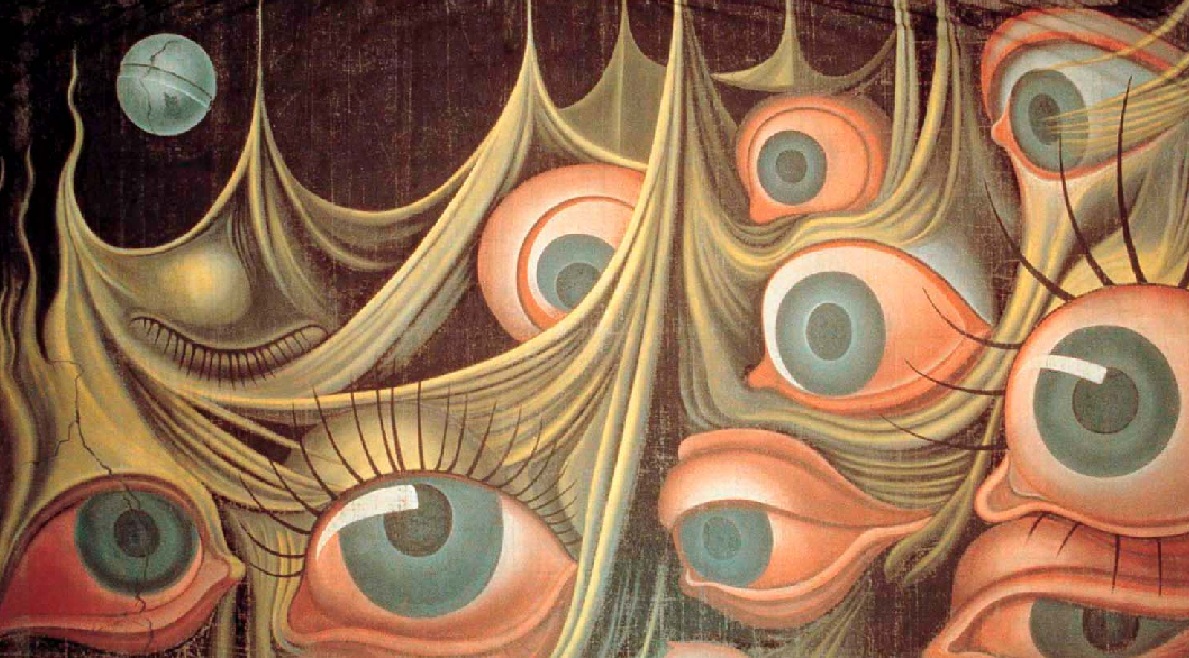“I wanted Dalí because of the architectural sharpness of his work”.
Alfred Hitchcock
.
This year marks the 80th anniversary of the release of Spellbound (1945), the iconic film directed by Alfred Hitchcock that changed the way surrealism and cinema could work together.
At the heart of this groundbreaking collaboration was Salvador Dalí, the Master of Surrealism, who brought his dreamlike imagination to the big screen and created a dream sequence that became a landmark in film history.
In 1945, Hitchcock was searching for a way to visually portray dreams in his psychological thriller Spellbound, which explored themes of psychoanalysis and amnesia.
Convinced that no artist could capture the essence of dreams quite like Dalí, he asked him to design a dream sequence that would be as fascinating as it was unsettling. Dalí accepted with enthusiasm, bringing his unique surrealist vision directly to the film set.
The result was a spectacular dream sequence that has become an integral part of Hollywood history. Dalí, created a cinematic moment that vividly illustrated the elusive nature of the subconscious, where reality blends with repressed thoughts and the hidden workings of the mind. One of his monumental paintings served as the background for the dream sequence in Spellbound.
.
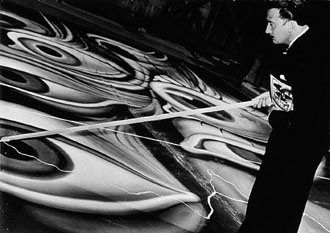
.
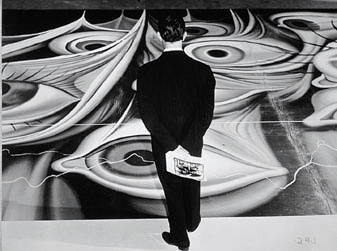
.
Originally lasting around 20 minutes, the dream scene was eventually cut down to just two minutes in the final version of the film. Yet those two minutes left an unforgettable impact: distorted landscapes, endless eyes, masked figures, and surreal architectural elements created a haunting atmosphere that transported viewers into an entirely different reality. It became one of the most iconic moments of the film and a powerful example of how art can deeply influence the language of cinema.
.
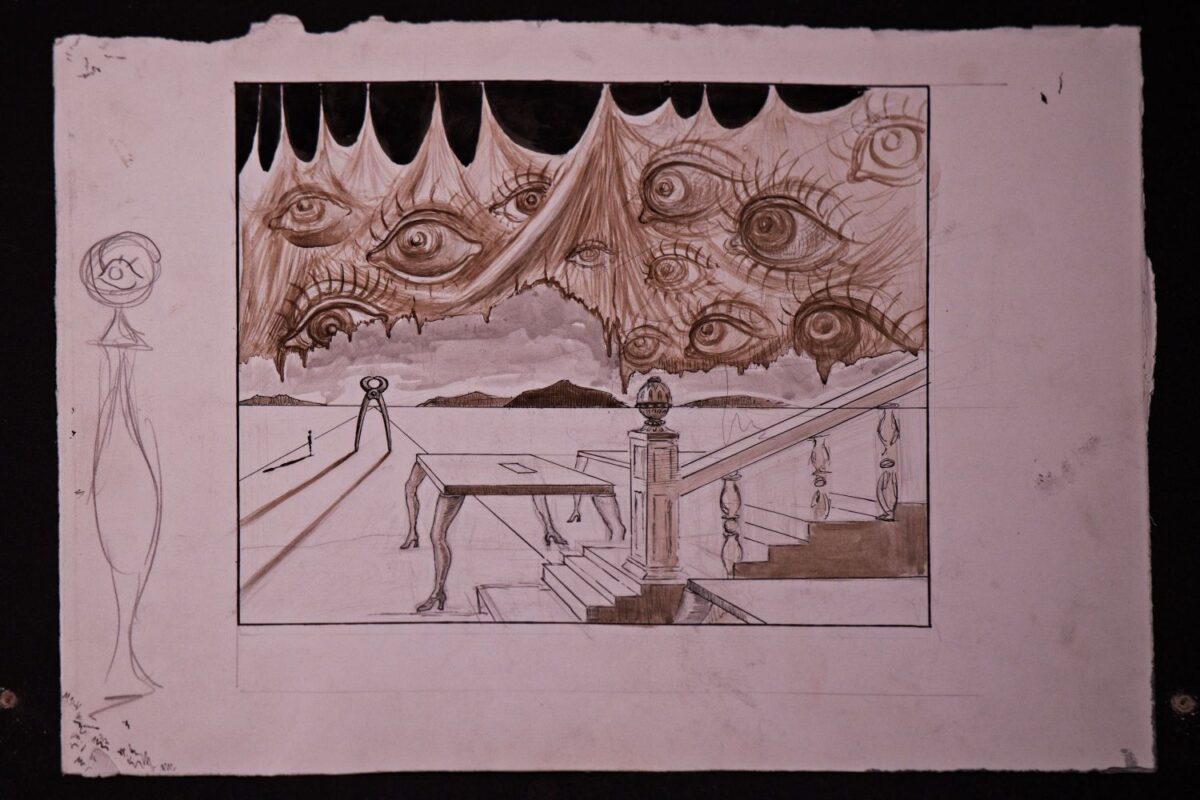
.
Dalí didn’t stop at preliminary sketches. He meticulously planned every detail of the scene, combining architectural perspectives with symbolic elements inspired by psychoanalysis. The dream included bizarre and unforgettable visuals, masked men playing cards in a casino, walls covered in staring eyes, and roots growing out of a fireplace.
Through a monumental painting, measuring 5 by 11 meters, Dalí brought to life the dreamlike state of the unconscious, where hidden emotions and symbols take shape. The artwork, created on two separate canvases (each 5.2 x 5.75 meters), was mounted on wooden frames, allowing it to be displayed together or individually.
.
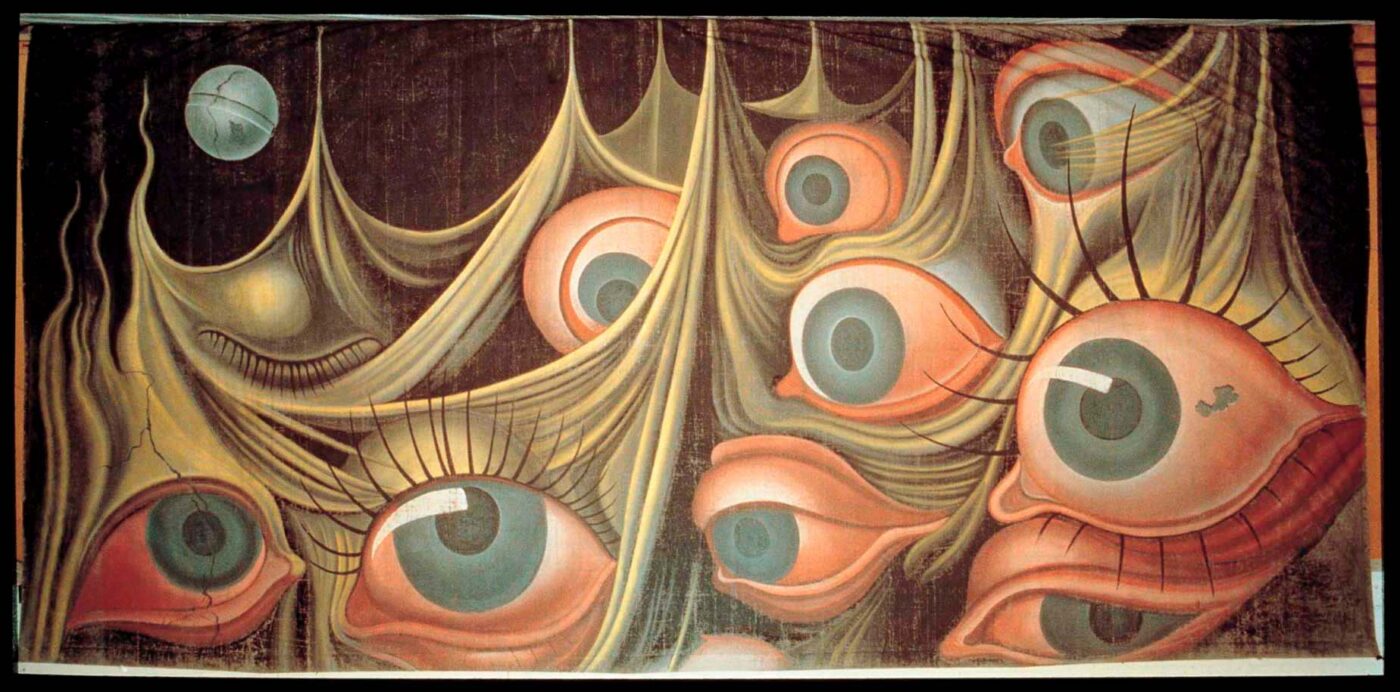
.
A fascinating aspect of Dalí’s creative process for Spellbound was his use of long, exaggerated perspectives and sharp shadows, distinctive features of his style. Hitchcock admired these choices, later explaining that Dalí had a unique way of capturing the “vividness of dreams”, unlike anything seen before in cinema.
“I could have chosen De Chirico or Ernst”, Hitchcock said in an interview, “but none were as imaginative and extravagant as Dalí. I wanted Dalí because of the architectural sharpness of his work”.
Gala, Dalí’s wife and muse, also played an important role in the creation of the Spellbound scene. While she wasn’t directly involved in the design, her constant presence and emotional support helped Dalí fully immerse himself in the project.
The partnership between Hitchcock and Dalí didn’t just enrich the film visually, it became a symbolic meeting point between surrealism and cinema. The dream sequence in Spellbound remains a brilliant example of how art can transform film into a sensory experience that goes beyond time.
Dalí was the perfect artist for this project. He had a deep interest in psychoanalysis, had carefully studied Freud’s The Interpretation of Dreams (1899), and had even met Freud in London in 1938, an encounter that left a lasting impression on his work.
.
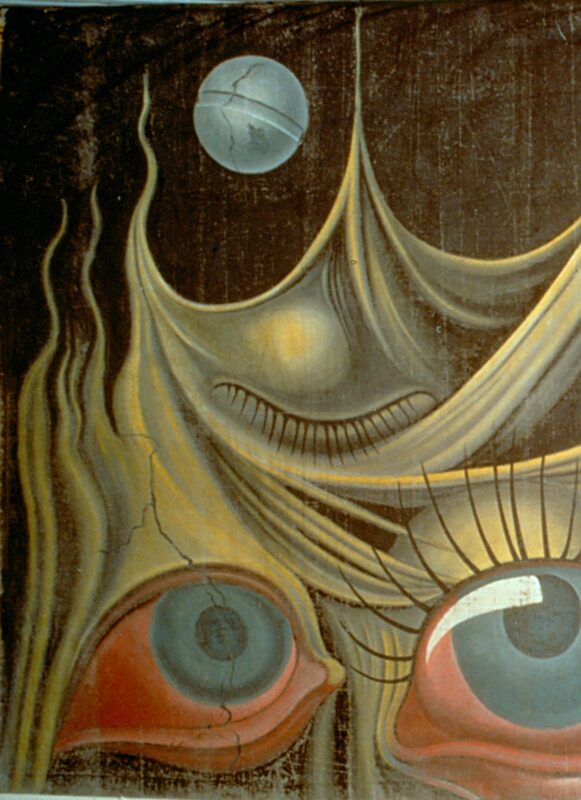
.
Beyond its cinematic debut, the Spellbound painting has traveled the world. It was exhibited in Los Angeles at Hall of Mirrors: Art and Film Since 1945 at the Museum of Contemporary Art. Today, the artwork is part of the Dalí Universe collection and continues to be displayed in exhibitions worldwide, allowing visitors to admire this extraordinary piece of art.
Most recently, in April 2024, the monumental painting gave its name to the exhibition “Dalí: Spellbound – The Exhibition”, held at the Old Philharmonic Hall in Munich. The exhibition offered visitors the rare opportunity to see the Spellbound painting alongside some of the most important works from the Dalí Universe collection, including the monumental sculptures The Persistence of Memory and Rhinocéros Cosmique.
.
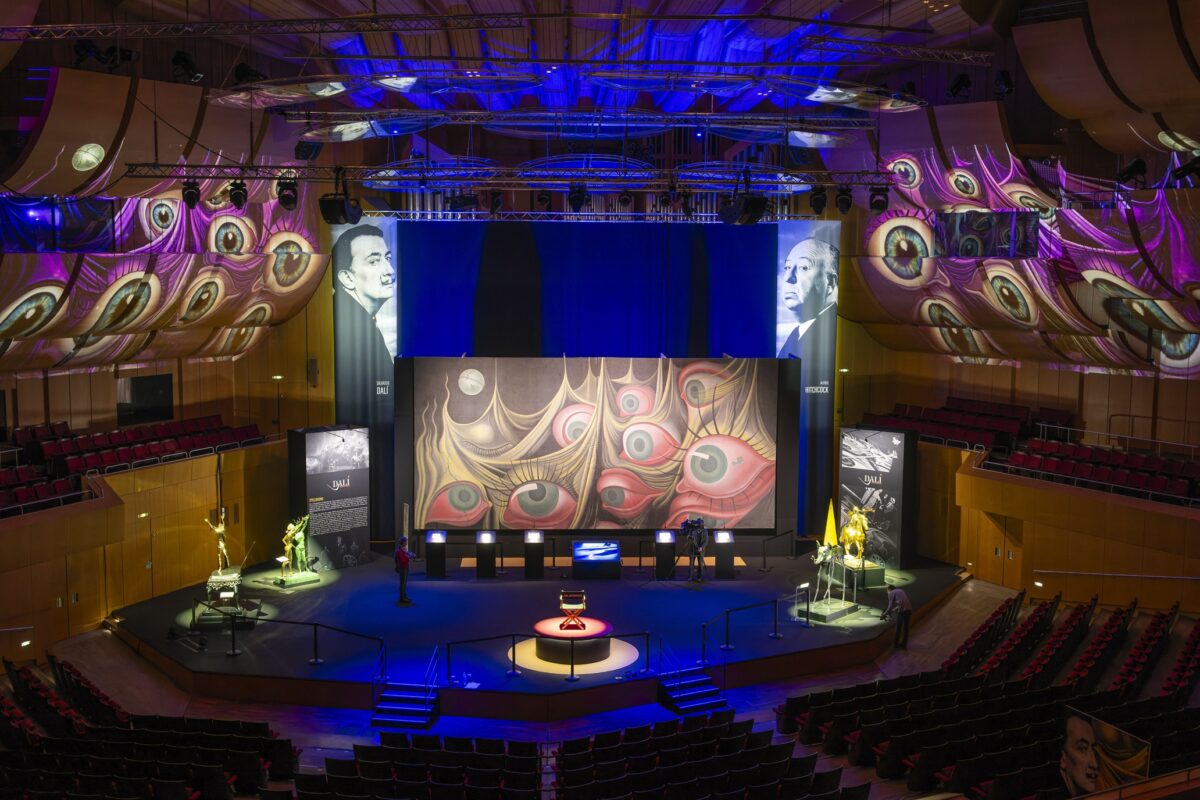
.
Even 80 years later, the influence of Dalí’s work in Spellbound remains strong. This visionary film continues to inspire artists, filmmakers, and dreamers around the world. It’s a powerful reminder of Dalí’s extraordinary ability to see beyond reality and translate the invisible into unforgettable images.
Salvador Dalí’s unique vision showed us that art knows no limits; it can cross into different worlds, touch every creative field, and enrich them with imagination, emotion, and depth.

